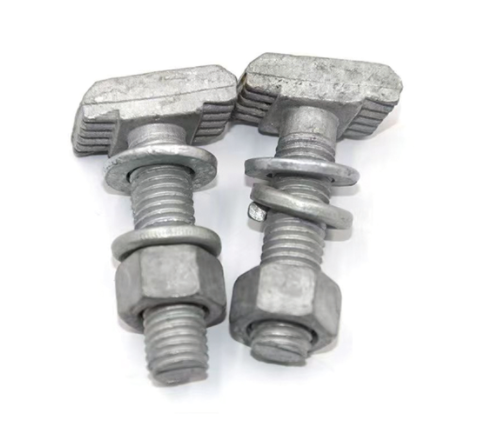Top Applications for the Newest Stainless Steel Inner Hexagon Three Combinations
Top Applications for the Newest Stainless Steel Inner Hexagon Three Combinations
Table of Contents
1. Introduction to Stainless Steel Inner Hexagon Three Combinations
2. What Are Inner Hexagon Three Combinations?
3. Benefits of Using Stainless Steel Fasteners
4. Key Industries Utilizing Inner Hexagon Fasteners
4.1 Automotive Industry
4.2 Constructi
May 09,2025

Top Applications for the Newest Stainless Steel Inner Hexagon Three Combinations
Table of Contents
- 1. Introduction to Stainless Steel Inner Hexagon Three Combinations
- 2. What Are Inner Hexagon Three Combinations?
- 3. Benefits of Using Stainless Steel Fasteners
- 4. Key Industries Utilizing Inner Hexagon Fasteners
- 4.1 Automotive Industry
- 4.2 Construction Industry
- 4.3 Aerospace Industry
- 4.4 Electronics Industry
- 4.5 Marine Industry
- 5. Applications in Detail
- 6. Installation and Maintenance Tips
- 7. Future Trends in Fastener Technology
- 8. Conclusion
- 9. FAQs
1. Introduction to Stainless Steel Inner Hexagon Three Combinations
In the evolving world of industrial equipment, the demand for **reliable and efficient fasteners** has never been higher. The **stainless steel inner hexagon three combinations** have emerged as a critical innovation that meets these demands. Renowned for their versatility, durability, and resistance to corrosion, these fasteners are revolutionizing various sectors. This article will explore the top applications of these fasteners, focusing on their unique characteristics and advantages in real-world scenarios.
2. What Are Inner Hexagon Three Combinations?
The **inner hexagon three combinations** are specialized fasteners featuring a hexagonal recess designed for a three-point connection. This design allows for enhanced torque transmission and a more secure fit, making them ideal for high-strength applications. Unlike traditional fasteners, the inner hexagon design enables a tighter connection, reducing the risk of loosening due to vibrations or thermal expansion.
These fasteners are made from **high-quality stainless steel**, which offers exceptional mechanical properties, making them suitable for both indoor and outdoor applications. The combination of strength and resistance to environmental factors such as rust and corrosion makes them particularly valuable in demanding industrial environments.
3. Benefits of Using Stainless Steel Fasteners
Stainless steel fasteners, particularly the inner hexagon three combinations, offer numerous advantages:
3.1 Corrosion Resistance
Stainless steel is inherently resistant to rust and corrosion, ensuring the longevity and reliability of assemblies in harsh environments.
3.2 Enhanced Strength
These fasteners provide superior tensile and yield strength, allowing them to withstand significant loads and stresses without failure.
3.3 Versatility
The unique design of inner hexagon fasteners allows for their use in various applications, from automotive to aerospace, making them highly versatile.
3.4 Easy Installation
The hexagonal design enables straightforward installation and removal, reducing labor time and improving efficiency.
3.5 Aesthetic Appeal
Stainless steel fasteners have a sleek, modern appearance, making them suitable for visible applications where aesthetics are important.
4. Key Industries Utilizing Inner Hexagon Fasteners
The **inner hexagon three combinations** are widely used across several industries. Here are some key sectors where these fasteners play a crucial role:
4.1 Automotive Industry
In the automotive sector, these fasteners are critical for engine assembly, suspension systems, and body structure components. Their ability to withstand high stresses and dynamic loads makes them indispensable for vehicle safety and performance.
4.2 Construction Industry
Construction projects often require robust fasteners for scaffolding, frame assembly, and heavy machinery. Stainless steel inner hexagon fasteners provide the strength and durability needed for these applications, ensuring structural integrity.
4.3 Aerospace Industry
In aerospace, where weight and strength are paramount, these fasteners are utilized in airframes, engine components, and landing gear. Their resistance to fatigue and corrosion is critical for safety and performance in this sector.
4.4 Electronics Industry
Electronics manufacturers use stainless steel inner hexagon three combinations in device assembly, providing secure connections that enhance device reliability. The aesthetic appeal of these fasteners also helps in consumer electronics.
4.5 Marine Industry
In the marine environment, where exposure to moisture is significant, stainless steel fasteners prevent rust and corrosion. Applications include boat assembly, underwater structures, and fittings.
5. Applications in Detail
Delving deeper, let's explore some specific applications of **stainless steel inner hexagon three combinations** in various sectors.
5.1 Machinery Assemblies
In machinery assemblies, these fasteners ensure that moving parts are securely fastened, reducing the risk of mechanical failure. The ability to transmit high torque without loosening under vibration is crucial for maintaining operational efficiency.
5.2 Furniture Industry
The furniture industry increasingly favors stainless steel inner hexagon fasteners for their durability and aesthetic appeal. From tables to office furniture, these fasteners provide a sleek look while ensuring structural stability.
5.3 Medical Devices
In the medical field, where hygiene and reliability are critical, stainless steel fasteners are preferred. They are used in surgical tools, hospital equipment, and devices that require sterilization and high precision.
5.4 Renewable Energy Systems
The renewable energy sector, particularly in wind and solar applications, relies on stainless steel fasteners for structural integrity and longevity. Their resistance to environmental factors ensures the reliability of installations in various climates.
6. Installation and Maintenance Tips
Proper installation and maintenance of **stainless steel inner hexagon three combinations** can significantly enhance their performance and longevity. Here are some essential tips:
6.1 Use the Right Tools
Utilize appropriate tools, such as hexagonal wrenches, to ensure optimal torque application without damaging the fastener.
6.2 Regular Inspections
Conduct regular inspections to detect signs of wear or corrosion, particularly in demanding environments like marine or industrial settings.
6.3 Lubrication
Applying appropriate lubrication can help reduce friction and wear during installation, ensuring a secure fit.
6.4 Torque Specifications
Always adhere to the manufacturer’s torque specifications to prevent under-tightening or over-tightening, which can lead to failure.
7. Future Trends in Fastener Technology
As industries evolve, so do fastener technologies. The future of **stainless steel inner hexagon three combinations** looks promising, with trends focusing on:
7.1 Smart Fasteners
Integration of smart technology could enable real-time monitoring of fastener integrity, ensuring early detection of potential failures.
7.2 Sustainable Materials
There is a growing emphasis on sustainability, leading to the development of eco-friendly stainless steel alloys that maintain strength while reducing environmental impact.
7.3 Customization
The demand for customized fasteners is likely to grow, allowing industries to tailor fasteners to specific applications, enhancing performance and reliability.
8. Conclusion
The **newest stainless steel inner hexagon three combinations** represent a significant advancement in fastener technology. Their applications across various industries showcase their versatility, strength, and aesthetic appeal. As we move forward, these fasteners will continue to play a crucial role in enhancing the efficiency and reliability of industrial equipment and components. Understanding their benefits and suitable applications is vital for engineers and industry professionals seeking to optimize their design and assembly processes.
9. FAQs
1. What are the main advantages of stainless steel inner hexagon fasteners?
**Stainless steel inner hexagon fasteners** offer excellent corrosion resistance, enhanced strength, versatility, easy installation, and a modern aesthetic appeal.
2. In which industries are stainless steel inner hexagon fasteners commonly used?
They are commonly used in the **automotive**, **construction**, **aerospace**, **electronics**, and **marine** industries.
3. How do I ensure the longevity of stainless steel fasteners?
To ensure longevity, conduct regular inspections, use the right tools during installation, and adhere to torque specifications.
4. What maintenance practices should be followed for stainless steel inner hexagon fasteners?
Regular inspections for wear, applying appropriate lubrication, and monitoring environmental conditions are essential maintenance practices.
5. Are there any future trends in fastener technology?
Yes, future trends include the development of smart fasteners, sustainable materials, and customization options to meet specific needs.

 中文版
中文版 English
English Русский
Русский عربي
عربي





